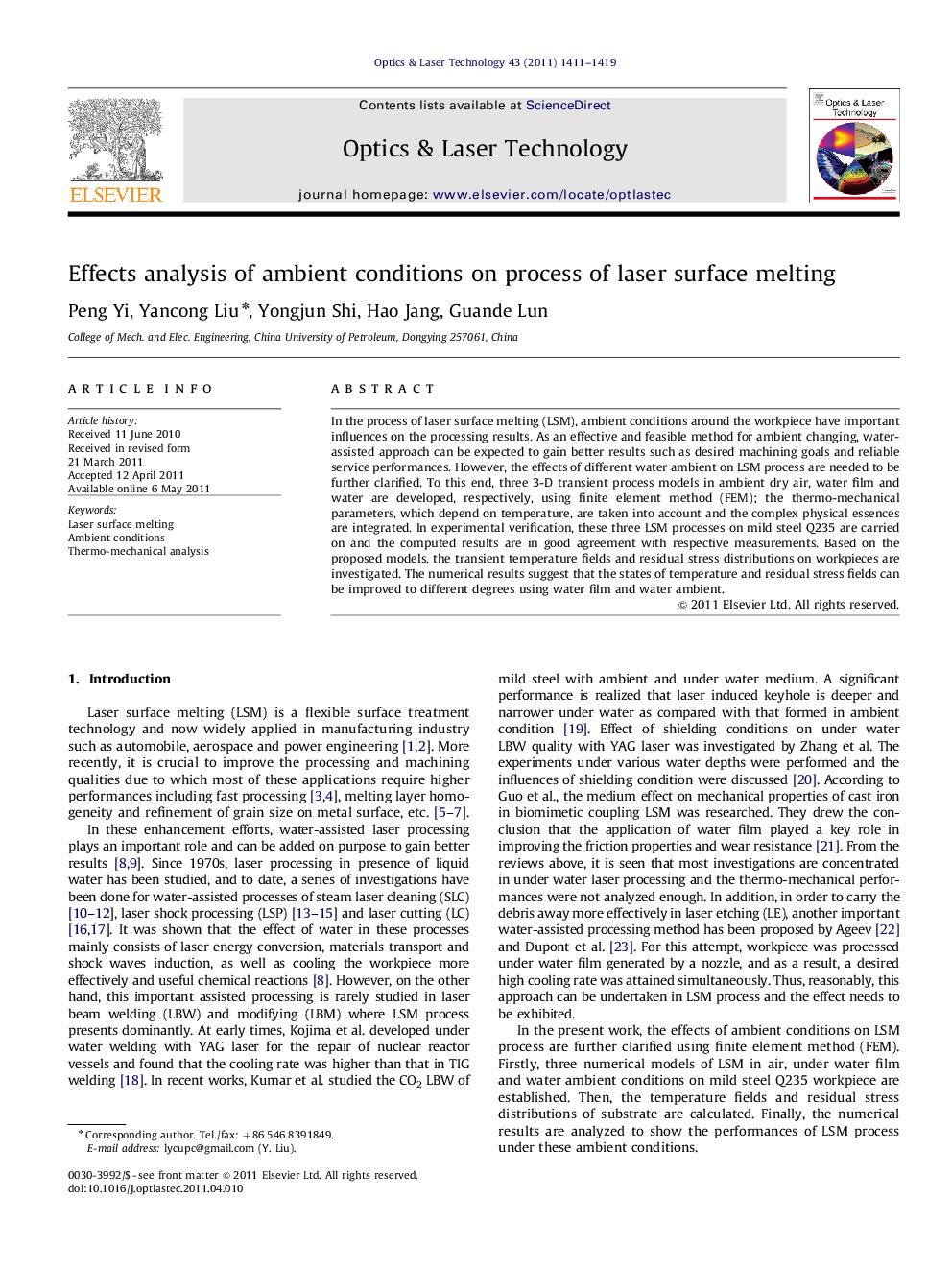| Article ID | Journal | Published Year | Pages | File Type |
|---|---|---|---|---|
| 733837 | Optics & Laser Technology | 2011 | 9 Pages |
In the process of laser surface melting (LSM), ambient conditions around the workpiece have important influences on the processing results. As an effective and feasible method for ambient changing, water-assisted approach can be expected to gain better results such as desired machining goals and reliable service performances. However, the effects of different water ambient on LSM process are needed to be further clarified. To this end, three 3-D transient process models in ambient dry air, water film and water are developed, respectively, using finite element method (FEM); the thermo-mechanical parameters, which depend on temperature, are taken into account and the complex physical essences are integrated. In experimental verification, these three LSM processes on mild steel Q235 are carried on and the computed results are in good agreement with respective measurements. Based on the proposed models, the transient temperature fields and residual stress distributions on workpieces are investigated. The numerical results suggest that the states of temperature and residual stress fields can be improved to different degrees using water film and water ambient.
► Water-assisted processes are performed and three verified 3D FEM models in dry air, water film and water are developed. ► The thermo-mechanical parameters vs. temperatures are taken into account and the complex physical essences are integrated. ► The transient/steady temperature and thermal stress distributions on substrates are investigated. ► The qualitative studies reveal that the LSM under water-assisted operations may help in achieving desired mechanical properties.
